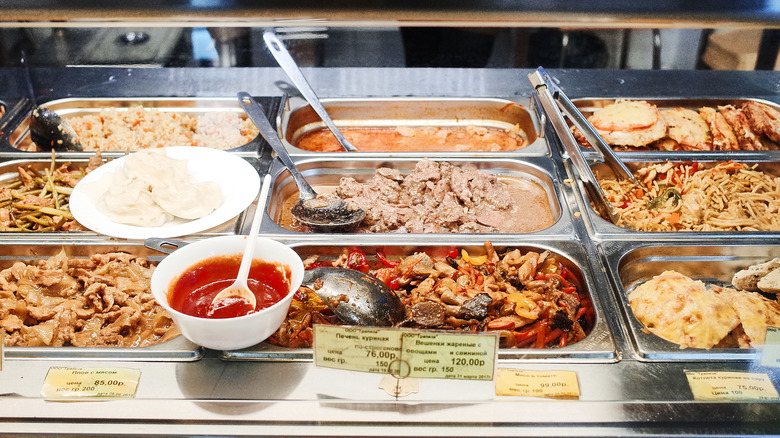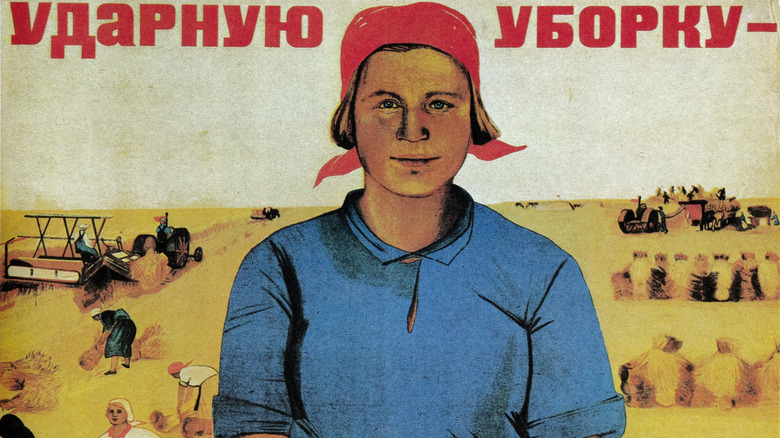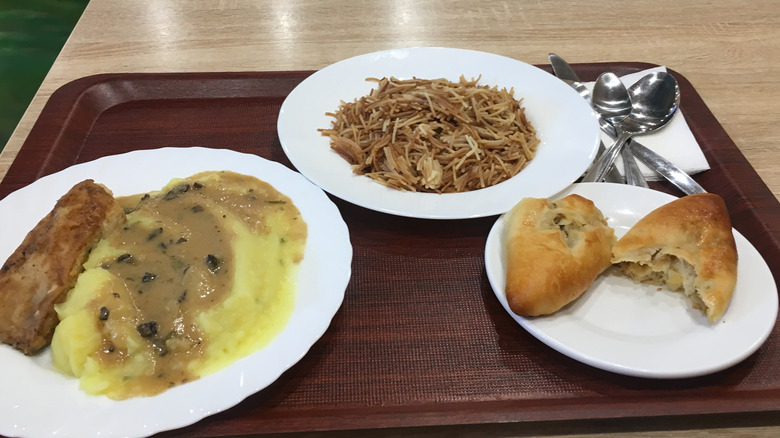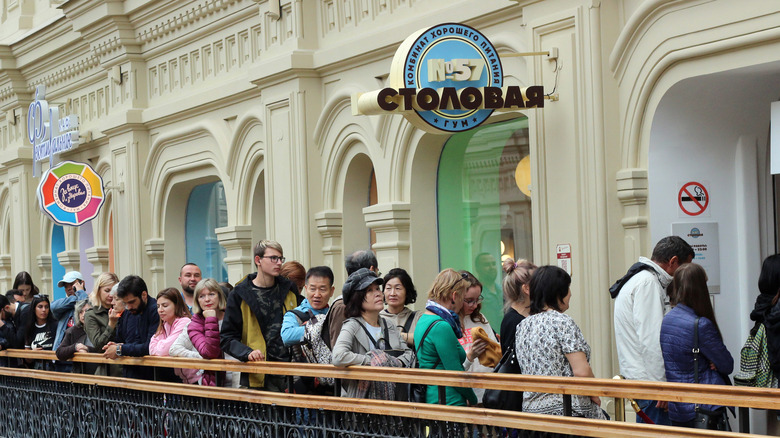The History Of Russia's Government-Run Cafeterias
Cooking at home is central for numerous cultures across the globe. Few among us can imagine our formative years without the presence of a parent in the kitchen. For many of us, this person was mom or grandma, and they poured their time and energy into making lunches and dinners to make sure that the family was fed and happy. However, in the former Soviet Union, there was a time when the pleasure of cooking for oneself and family mealtime was utterly removed from daily life.
Beginning in 1917, after the success of Lenin and the Bolshevik Revolution, the communist government determined that it would be the state's responsibility to feed the populace. The program that resulted was designed to make home cooking a thing of the past by establishing cheap, state-run canteens everywhere, from schools to workplaces, that were designed to feed vast quantities of people simultaneously, per Russia Beyond.
The communal ideal
The societal change was almost instantaneous. As the Bolsheviks took over every aspect of Russian life, one of the first things they sought to "liberate" was the need to cook food. According to Atlas Obscura, the communist leaders saw home cooking as an ineffective use of resources. State-run canteens, called stolovayas, were set up to free Soviet women from "kitchen slavery." The thinking went that being free of the kitchen, women could work side by side with men in factories and on farms. Stolovayas were also an effective way to consolidate the nation's food system.
The idea of communal dining was a cornerstone of early Soviet ideals. During the 1920s, Russia was utterly taken with the socialist concept of universal brotherhood and labor communes. Apartments were shared between numerous families, and former Tsarist restaurants and bars were converted into communal canteens (per Russia Beyond & Liden and Denz). Schools were not excluded from this new governmental regime. Students in the Soviet Union were served hot meals on campus, so parents no longer had to cook or provide meals for their children. Instead, parents were encouraged to focus on work.
What was the food like?
While the egalitarian ideals behind the stolovaya were well cemented, the quality of these meals was critical in keeping the population fed and happy under this regime. And the intent of the government was clear — meals were meant to be little more than nourishing in order to give the labor force the energy they needed to work. Cutlets of meat were served loaded with breadcrumbs. Salads came dripping with mayonnaise to add calories. Solyanka, a thick soup of meat, pickles, and lemons was served in steaming bowls (via Russia Beyond and Atlas Obscura).
Despite any efficiency savings, the stolovayas could do little to combat the massive food shortages that plagued the Soviet Union. HistoryHit explains that the numerous conflicts, government collectivization of grain farms, and the persecution of peasants led to the death of over five million people between 1918 to 1921. And if famine wasn't enough, according to Atlas Obscura, meager meals were also the result of strict portioning, as "ideologically pure" chefs replaced those that were better experienced in cooking for large groups. Add to that the fact that all the good produce was being routed to the higher-ups in the state, and things were looking very grim indeed.
The stolovaya's legacy
Though the Soviet Union is no more, it is still very much a part of the living memories of the Russian people. A certain amount of nostalgia exists, particularly in Moscow, for the canteens of old. Perhaps that is why Stolovaya 57 is so popular. Lines extend out the door of this relic of the Soviet Union, where diners are served heaping trays of boiled vegetables, jellied pork, Chicken Kiev, stuffed cabbages, mayonnaise-filled Russian salads, and lemon tea. All for the equivalent of $7.30 (via The New York Times and Atlas Obscura).
Pew Research Center conducted a poll showing that half of Russians between the ages of 18-34 — most of whom, it should be noted, were either not yet born or too young to properly remember the Soviet Union — believe that its fall was a bad thing. But the new interest in stolovayas are changing the way everyday Russians view dining out, according to Atlas Obscura. Instead of dropping lots of cash, they can go somewhere that offers a lot more bang for their buck. It's easy to see the appeal of good, cheap food, particularly in a country that suffered some of the worst famines of the last century.



